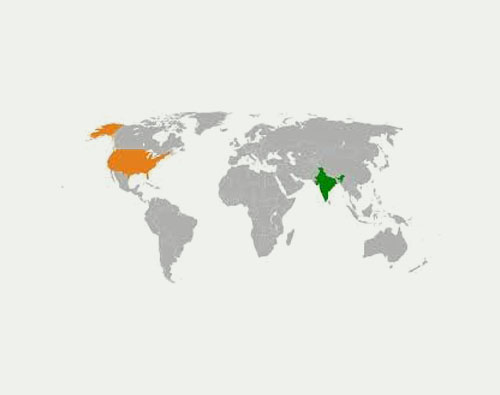Maximizing Returns Through Efficient PV System Design And Installation Practice
 Solar PV Systems Gained Unprecedented Acceptability by the Domestic as well as the Industrial Consumers throughout the World. Specifically, the Domestic Consumers Perceive it as a Direct Contribution to Climate Mitigation Measures Coupled with a Sense of Independence from the Centralized Grid System. The Cost Competitiveness of Solar PV systems vis-à-vis Other Distributed and Utility Scale Power Systems Also Made it the Primary Choice Among the Electricity Consumers. Various State and Central Govts Throughout the World are Promoting Adaptation of Solar PV Systems in Order to Accelerate Both the Energy Transition and Energy Security Goals.
Solar PV Systems Gained Unprecedented Acceptability by the Domestic as well as the Industrial Consumers throughout the World. Specifically, the Domestic Consumers Perceive it as a Direct Contribution to Climate Mitigation Measures Coupled with a Sense of Independence from the Centralized Grid System. The Cost Competitiveness of Solar PV systems vis-à-vis Other Distributed and Utility Scale Power Systems Also Made it the Primary Choice Among the Electricity Consumers. Various State and Central Govts Throughout the World are Promoting Adaptation of Solar PV Systems in Order to Accelerate Both the Energy Transition and Energy Security Goals.
Although, the Modular Nature of PV Systems makes it Easier for the Installers, Roofing Contractors, Operation and Maintenance Professionals, Proper 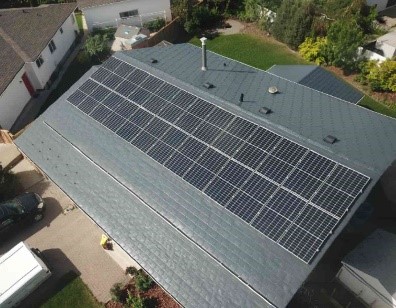 Understanding of the Design Aspects and Best Practices for Installation and O&M can Maximize the Return on Investment from Installation of Such Systems. Further, Optimized System and Component Design will Ensure Reliable Operation, Better Performance, Safety and Longevity of Solar PV System.
Understanding of the Design Aspects and Best Practices for Installation and O&M can Maximize the Return on Investment from Installation of Such Systems. Further, Optimized System and Component Design will Ensure Reliable Operation, Better Performance, Safety and Longevity of Solar PV System.
The Sizing Principles for Grid Connected and Stand-alone PV Systems are Based on the Following Functional Requirements.
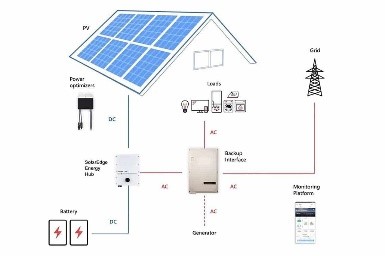
a. Grid Connected Systems (without energy storage) to provide Supplemental Power to Loads wherein any Failure of PV system does not Result in Loss of Loads.
b. Stand-Alone Systems (with Energy Storage) to meet a Specific Electrical Load Requirement.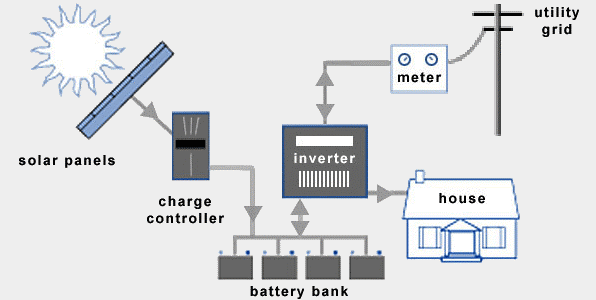
Design Methodology for Grid Connected System without Storage Suitable for Installations under Net metering policy;
- Find your monthly average electricity usage from your energy bill: X units (kWh) per month say
- Find your daily average electricity usage = X/30
- Find the daily average peak sun hours for your location: let’s assume it is Y kWh/m2
- Calculate the required AC output from solar system to generate 100% of your electricity consumption: P=X30 x Y
- Calculate the capacity of the solar array needed for this system: C=PSytem efficiency . The system efficiency needs to be estimated taking into account all the losses such as inverter efficiency, contact losses, array losses, soiling losses and loss due to temperature. However, a good approximation for overall efficiency would be around 85%. Accordingly, C = P/0.85
- Calculate the number of PV modules required: If you are selecting modules with individual STC power rating of Pm (say) then number of modules N = P x 10000.85 x Pm (may be rounded off to the next number)
 Inverter: The Sizing of Interactive PV Systems is Centered on the Inverter Requirements. One or More Inverters with a Combined rated Power Output 80% to 90% of the Array Maximum Power Rating at STC are Normally to be Considered. The PV Strings to be Sized with Specific Number of Series-connected Modules Permitted in Each Source Circuit of the Inverter to Meet Voltage Requirements. The inverter Power Rating Limits the Total Number of Such Parallel Strings.
Inverter: The Sizing of Interactive PV Systems is Centered on the Inverter Requirements. One or More Inverters with a Combined rated Power Output 80% to 90% of the Array Maximum Power Rating at STC are Normally to be Considered. The PV Strings to be Sized with Specific Number of Series-connected Modules Permitted in Each Source Circuit of the Inverter to Meet Voltage Requirements. The inverter Power Rating Limits the Total Number of Such Parallel Strings.
Mounting structure: Design of the PV Mounting Structure Depends on The Availability of Space for the PV Arrays. It may be on a Flat or Angular Rooftop, Building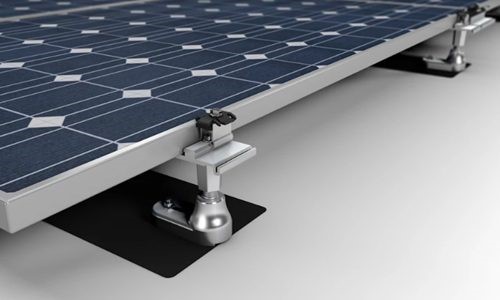 Integrated Structure or Ground Mounted. Various Designs Fixed as Well as Tracking Structures can be Considered Depending on the Site Conditions. In Each Case the Design of the Mounting Structure Must Consider the Mechanical Load Requirements Both Static and Dynamic. The Static Load may be Attributed to the Weight of the PV Modules Along with Other Accessories Which will be Mounted on the Structure, Weight of Snow Accumulation (in case the Site is in Cold Climate) etc. The Dynamic Load Due to Normal Wind and Occasional High Stormy Wind also Need to be Considered.
Integrated Structure or Ground Mounted. Various Designs Fixed as Well as Tracking Structures can be Considered Depending on the Site Conditions. In Each Case the Design of the Mounting Structure Must Consider the Mechanical Load Requirements Both Static and Dynamic. The Static Load may be Attributed to the Weight of the PV Modules Along with Other Accessories Which will be Mounted on the Structure, Weight of Snow Accumulation (in case the Site is in Cold Climate) etc. The Dynamic Load Due to Normal Wind and Occasional High Stormy Wind also Need to be Considered.
Other Balance of system: A PV System Also Requires Accessories Such as Charge Controllers, Switches, Power Cables, Junction boxes etc. Each of These Component Requires Careful Considerations for Sizing Which will Reduce the Overall System Losses and Reliable Operation of the System for Longer Period.
In Addition to the Optimized Design of a PV System Along with Associated Components, Proper Workmanship and Best Installation Practice Plays a Key Role Towards Ensuring a Quality System and Better Reliable Performance. Further, Quality of Each Component must be Ensured Through Quality Standards Applicable for Each Component. A Perfect Designed and Commissioned PV system will Certainly Ensures the Return on Investment in Minimum Possible Period and who doesn’t want a longer life for their Solar Assets?
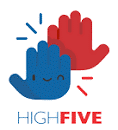 HighFive Global brings on board Reliable Design Engineering Experience of decades. Thanks to our team of engineers and their constant endeavors to innovate and upgrade with last minutes changes occurring in the Industry. We are India’s first preferred and Number 1 players beyond serving clients we serve the solar industries in our quest to make India and World Carbon Minus and Green Sufficient.
HighFive Global brings on board Reliable Design Engineering Experience of decades. Thanks to our team of engineers and their constant endeavors to innovate and upgrade with last minutes changes occurring in the Industry. We are India’s first preferred and Number 1 players beyond serving clients we serve the solar industries in our quest to make India and World Carbon Minus and Green Sufficient.
 We at HighFive are the promoter of WWW.CRESPAI.COM, the Renewable Energy Industry Confederation and the
We at HighFive are the promoter of WWW.CRESPAI.COM, the Renewable Energy Industry Confederation and the GREEN URJA CONCLAVE, India’s Biggest Forum of Intellectual (Technocrats, Researchers, Scientists, Policy Makers, Corporate Leaders, Civil Society Members) Debate and Policy Propagation of Solar & Green Technology, Environment & Climate Change. The 5th Edition of Annual CRESPAI’s Green Urja Conclave shall be held at the National Capital of Delhi on 5th June 2023 while conferring the Green Globe Awards to Corporates & Organization contributing immensely to Green Technology and Controlling Climate Change.
GREEN URJA CONCLAVE, India’s Biggest Forum of Intellectual (Technocrats, Researchers, Scientists, Policy Makers, Corporate Leaders, Civil Society Members) Debate and Policy Propagation of Solar & Green Technology, Environment & Climate Change. The 5th Edition of Annual CRESPAI’s Green Urja Conclave shall be held at the National Capital of Delhi on 5th June 2023 while conferring the Green Globe Awards to Corporates & Organization contributing immensely to Green Technology and Controlling Climate Change.
Navneet Kaur
Head of Customer Success
Contact E-mail:-smo@highfive.co.in


Bhumika
Chief of Project(Solar Dept.)
Contact E-mail:-cmo@highfive.co.in

